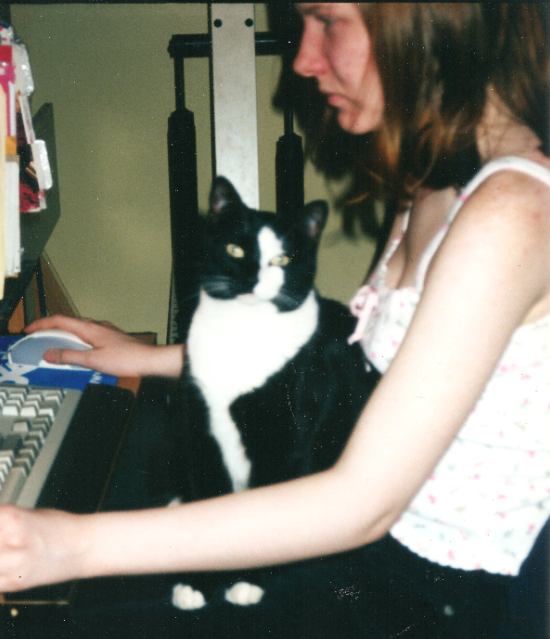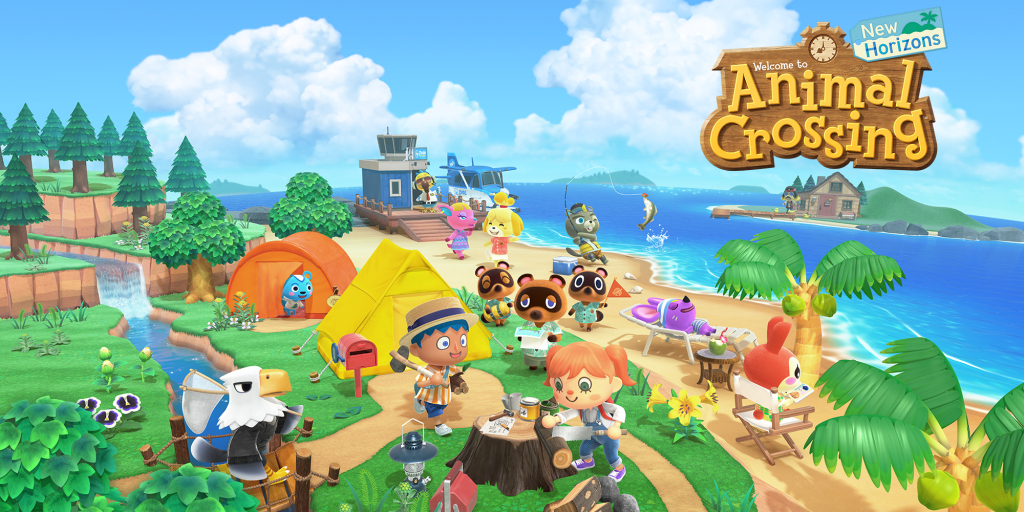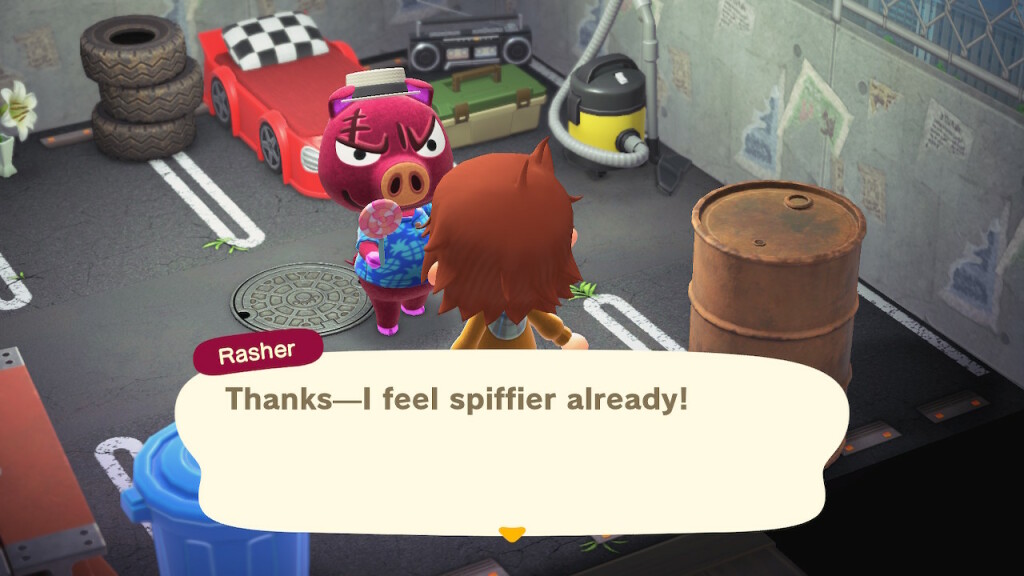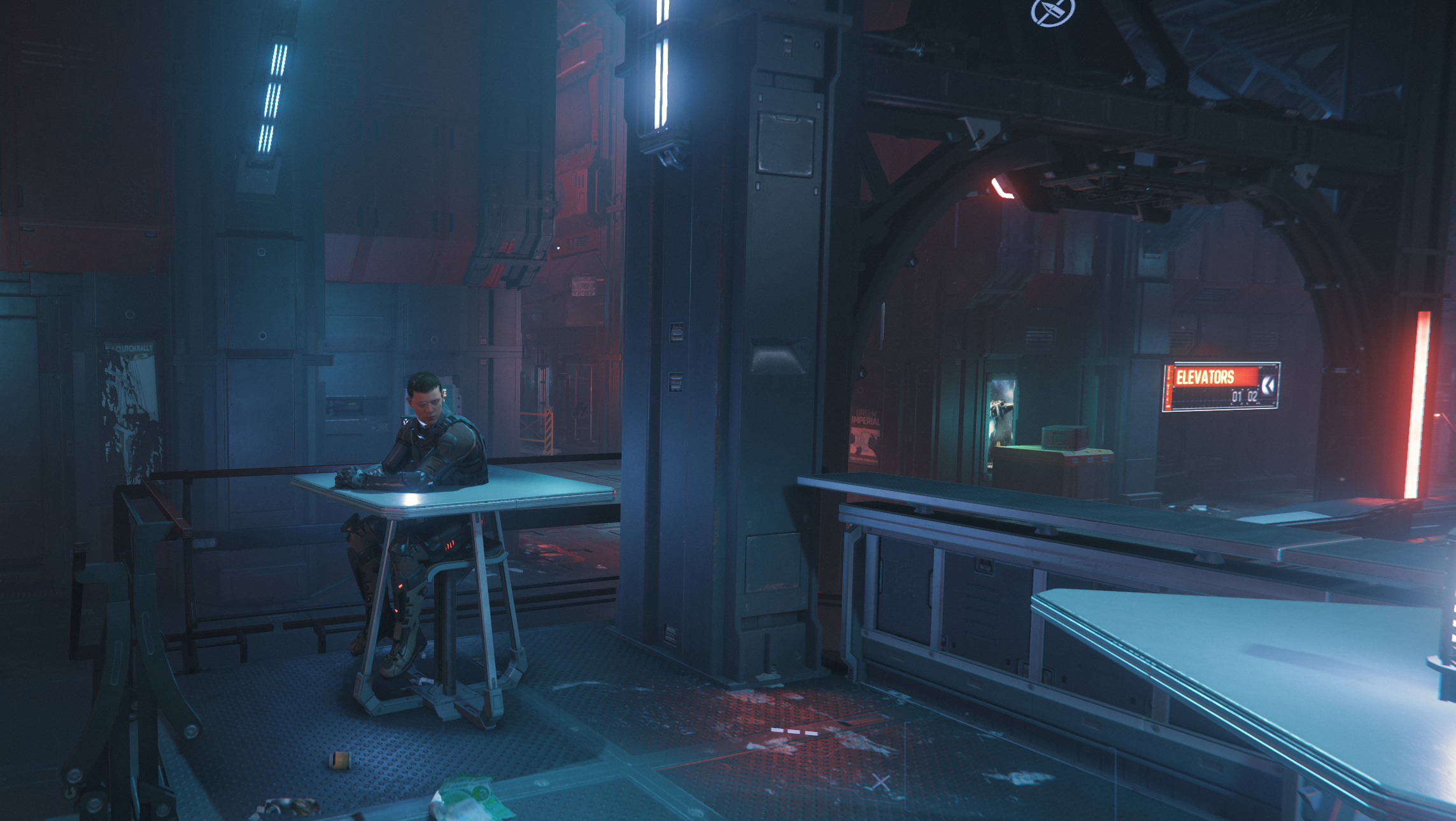Posted on August 9, 2021
Merchants of the Skies Review (Casual Player Perspective)
What I like about Merchants of the Skies is that I can have different goals – from supplying the inns to exploring the maps to building lighthouses. This offers variety for a single player.
The game’s graphics is simple, but does not not look “old”. It looks intentional as to not make be too complicated, but just interesting enough to be playable. The dimensions of the game include building things, to earning things to moving and encountering different challenges.
Challenges – most of the challenges are pretty simple, as the most complex one is deduction. The player needs to guess what three notes the Octopus is thinking of and in what order (out of 4 notes). This can be done in about 3 – 4 tries, based on deduction. The other challenge is just keeping track of the notes that are played and then repeating it correctly each time – this is about 4 times in total.
The variety I like are that you can collect a variety of “basic” resources and buy their respective islands, which vary in cost, based on how much you can get in the market. The purpose to buying the islands is so that you don’t need to gather by hand, which can be long and tedious and may not be worth it, based on the money I get from it.
Upgrades – there are two levels of upgrades – basic, which vary from getting crates, faster sails and tools/baskets/buckets to gather resources and the other is advanced which thus far, can only be gathered at one location in the Northwest corner of the map. These are specialized and can help in getting batteries, to even faster sails to extracting batteries from storms.
Merchants of the Skies is a cute game to play for a short while. Though it’s interestingly addictive to play – as you try to get just one more part of the mission done or one more building to build – it can end up seeming to become a bit of a drag due to its repetition nature.
A review of Merchants of the Skies from perspective of Person who doesn’t play video games…
Merchants of the Skies, as described best by the Steam Store page: “In Merchant of the Skies you’re the captain of an airship! Sell items, gather resources and build your own trade empire in the clouds!”
I like it for the ease of use, silly “low-res” graphics and for its multi-methods of winning. I don’t like it for its repetitiveness, keyboard & mouse controls and its lack of ways play the game.
Allow me to elaborate…
Ease of use – many things are intuitive and I don’t need to read a long drawn out “how-to” in ordeter to start playing the game. I can just jump right in and get being a merchant. I am able to pick a goal (& ship, depending on goal) and am given enough instructions to move around the map and take actions.
“90’s Style Low-Res” Graphics – The graphics do not usually sell it for me in a game. The graphics have to be good enough to be colorful and varied enough to keep me interested. So, the 90’s style actually makes it easier to play the game, so my brain doesn’t have to “figure out” stuff graphically in order to play. I don’t mind beautiful graphics – for example I love the WoWs – World of Warships graphics, as the ships up close look beautiful and rich in color. I just don’t think it’s necessary or even warranted in a game like Merchants of the Skies.
Multi-Methods of Winning – There are several slightly varying goals and hence winning the game that give variation, depending on what goal I choose – from delivering items to the Inns to getting to a certain amount of coins. With this comes a variation in resources and map size even. I enjoy this variety, as I don’t have to learn a whole new game, but just vary my strategy a bit and get the feel of playing a slightly different game.
Repetitiveness – Though there are different goals, there are still ultimately the same set of actions I have to take, in order to win. And these actions take awhile and got me a bit bored and feeling like I’m working vs. playing a game.
Keyboard & Mouse controls – I like that they have keyboard controls. I don’t like that I can’t do everything with the keyboard. I need to use the mouse for some of those things, which makes game play go slower than I’d like. Also, the keyboard controls are displayed in every scene. It would be nice if the controls were presented when I wanted to see them, instead (e.g., shortcut for Shortcuts).
Lack of ways to playing the game – As mentioned above, I like that there are multiple ways to win the game; however, this may be a façade, as the game play is the same each time – Build up resources to buy islands to build on them to buy more stuff, to build more to buy more islands, and rinse and repeat. It would be nice if there were actual different ways to play the game…
Overall, the game is good for about a dozen sessions, but am not sure it was worth the cost of paying $40 for the game. Then again, I have clocked 80+ hours into it, which is on the higher end for me.
Posted on June 8, 2021
What Makes a Game Worth Your Time & Money? Part 1: Simulations!
Some of us here at the Interplanetary Voyage are on a journey into the world Game Development. As part of this process, we pick apart games we love to play and look at why we love them so. While the team was having some Research and Development discussions, the question came up, what makes a game worth your time and money? Is it a direct money-to-time math equation? Is it an experience that transcends the amount of Simoleons you put down for it?
I’m here to give my take on this very subjective and personal question, breaking down my favorite games (and maybe some not-so-much) and why they are worth it (or not). I will state how much I spent, how long I played it, and the overall experience I had with it.
If you’re feeling that tl;dr energy I have a quick breakdown list at the start of each game section to quickly review my thoughts.
But first Who Am I?
Well, I’m Nicole. Hello!
I grew up with a Nintendo, then a game boy. Kirby’s Dreamland was the first game I ever completed.
My friends all had gaming consoles in high school and I mostly lived through their experiences. Once, I called my friend to hang out and she said, “Can’t. Fighting Sephiroth [from FF7] right now.” When I’d stay overnight, she’d hand me the controller to fight zombies in Resident Evil. I remember seeing that first cut scene and being blown away by what games could do at that time. And even through the bad acting, I still got scared. What if I run out of bullets or I make a wrong turn and a zombie latches on to me? The stress was high. And this was from someone who loves horror movies and watched all sorts of things I probably shouldn’t have. And still this game got me!
Then, the Sims came out. And long sessions of making sure those pixilated people didn’t die became my new life. I would talk to my friends about the Simfolk and one of them said, “You talk about them like they’re real people!” That’s the power of that game. It allowed all kinds of stories to come out through our imaginations, and that’s one of the reasons that franchise has remained so popular.

As an adult, I eventually got various consoles and a PC to play games and would become a lifelong gamer from then on. I had many a late night playing video games, whether that was staying up until 2am to finish Kingdom Hearts 1, or slowly chipping away at Oblivion from the Elder Scrolls series for well over a decade, never finishing the main quest. Games became a constant. With the addition of my spouse, whom I got to try modern games, we’ve expanded our living room to accommodate 2 TVs and multiple consoles, just so we don’t have to share. That’s partnership!
On to the Games!
I love open world RPGs, simulations, and survival games the most. Some of my favorite games are Stardew Valley, Oblivion, & Subnautica. This is a most hefty article series, so I will break it into different parts with a focus on genre.
First up…. Farm Sims & Simulations!

Stardew Valley $14.99 / 195 hours
- Strengths: Art, Music, Characters, Story, Variety of Activities, Cohesion
- Weaknesses: Can be surprisingly stressful
- Cost Breakdown: 7 cents per hour of pure entertainment
- Conclusion: A lot of gameplay for the cost, even 1 year of in-game play is worth it.
I do love a good farming game. The key to what makes a game last for me is that it has a variety of things to do so it doesn’t get stale or cause burnout. Stardew allows for this. During the day you could tend the farm, clear the land, build buildings, and buy animals. Or you could woo the townsfolk, giving gifts or running errands for them. Maybe you like that solitary life and would rather go fishing, set lobster cages up, or go mining into the night. But don’t pass out! You lose some items. Maybe raccoons made off with them? Who knows!
So if this is a money-to-time ratio conversation, I spent around 7 cents an hour. Well worth it from that perspective. In fact, it’s a steal at that rate. Even though I’ve done so much in that game I still have the desire to visit that world again, and maybe someday I will. Though I did enjoy my stay in the Valley, I can’t say it was truly relaxing. I got a bit hardcore about each day and what I was going to do.
If this is just about experience, I’d say even with only playing 1 year in-game it would have been worth it. The amount of variety, the writing of the story and characters, the art, the music (I’d listen to the soundtrack when not playing the game); it all enveloped me like a comfy blanket. It was the perfect version of that type of game, very fully realized and oh-so-satisfying. It weaved a cohesive experience that now lives nestled comfortably in the nostalgic wing of my mind.

Kynseed $9.00 / 65 minutes
- Strengths: Good concept (generational/legacy play), nice pixel art, pleasant music, interesting world lore
- Weaknesses: A lot of work needed still in Early Access
- Cost Breakdown: 9 dollars per hour of bug reporting entertainment?
- Conclusion: Left a lot to be desired in 2018, has a lot more to offer in 2021. One to keep an eye on if it can pull off the concept
I got this through Humble Bundle, which is how I was introduced to it back in 2018; eventually accessing it directly through Steam. This game is still in development. I learned that I’m not the kind of player to enjoy Early Access games.
In Kynseed you can farm, run a business, raise a family, and meet some fae folk. When your character dies, you take over the next in line, and continue playing. To me this premise is the coolest part. It’s the hook.
Even though spending $9 for an hour of entertainment is decent in general, this doesn’t translate to video games. Due to it being in early development at the time of playing it back in 2018, it lacked much to do other than help the Devs find bugs or join a budding community on Discord.
The takeaway of this brief experience was pleasant if only through the aesthetics of the game. The lore, which includes Fae people, and the way generations are acknowledged through a literal family tree is very cool. The music and the art are very enjoyable as well. The writing left a bit to be desired, though I figured it would get more ironed out as time went on. In May of 2021, it sits at $12.99 on Steam and has a lot more content now. I dipped in and played the first day again. And indeed there’s a lot more to sink into. So, I’ll be checking that out more in the future.
The Dev team (some of which were behind the Fable series) is comprised of very genuine people with a good lighthearted sense of humor which really has me routing for a successful end to this project.

Graveyard Keeper $45.00 / 165 hours
- Strengths: Unique spin on genre, fun characters and story
- Weaknesses: Buggy, required more money upfront to play Alpha, repetitive soundtrack, story progression confusion
- Cost Breakdown: 27 cents per hour of macabre entertainment
- Conclusion: Overall fun game, continued DLCs, Niche spin on genre used to its benefit
I played all 165 hours between the Alpha release on PC (which you had to pay $5 more to play, for a total of $25 / 65 hours) and the full release through the Switch ($20 / 100 hours), which consisted of the main story and most of the first 2 DLCs released. Again, not a fan of playing pre-released games. And after this one, I stopped doing that!
This is also a Farm Sim, except you not only grow plants; you also deal with corpses, as the Keeper of the Graveyard. The setup of the game is you live in modern times as someone my husband refers to as the Bearded Hipster. As you cross the street you see your love is calling you and then you get hit by a car! You then get zapped to a place similar to the medieval age where you have to find a way back home, to your love.
The game had a linear story that had interwoven paths to get there. This was a problem when you didn’t know who you needed to talk to next to further the plot. Because every character had their own story they wanted to progress you had to go online or run around in-game trying to figure out which story needed to progress first to allow the main story to proceed.
The art, lighting, and animation was really well done. However, the 2 songs that play forever on loop are not. One thing required for long term enjoyment on games like this is ample variety of music. Otherwise, it gets muted due to becoming annoying.
If I count only my purchase and hours from the Switch, it comes to 20 cents per hour, with the grand total coming to 27 cents per hour. Even with purchasing this game twice, it is still has a good cost-to-play breakdown.
The experience did include some frustrations with the alpha, and general bugs/quirks in the game. However, overall it was a unique spin on the genre, one that speaks to my macabre heart. It offers something I haven’t seen in other games of this genre, with its dark, offbeat humor, interesting game play (you can do autopsies!), and loads of fun grinding. And with the continued output of DLC, this game will have even more longevity.

Oxygen Not Included $19.99 / 49 hours
- Strengths: Stable even in early access, nice aesthetics, and a range of strategy based on your scientific knowledge
- Weaknesses: It’s harder if your less scientifically inclined, though the game has updated to accommodate many play styles and difficulties
- Cost Breakdown: 40 cents per hour of Don’t Die On Me, Man! entertainment
- Conclusion: Very well executed with plenty of additional content being added bringing new challenges and freshening up the player’s experience.
This one is a Space Colony Simulator, which is very well done in execution. The only reason I’ve not pumped more hours into this game is due the game going over my head with all its science-ing. I did play this game in an early access state, though it was a bit later in that process. The game was quite stable, which was a nice experience to have after my other experiences. It lacked as much content as it has now while still managing to be entertaining enough.
At around 40 cents per hour, I definitely got my money’s worth. As far as game play experience, it has me coming back every few updates, trying to wrap my mind around keeping these little silly duplicates alive. I usually watch a lot of YouTube tutorials in addition to playing this one. Even though I lack the science knowledge I need to know, it’s still a great time. The art, the music, and all the personality it brings makes it worthwhile.
There have been at least 10 Lambtron colonies that have failed, and trust me, there will be more.

Animal Crossing $60.00 / 225 hours
- Strengths: Addictive game play, open world with tons of creative freedom, cute animals, relaxing
- Weaknesses: Real-time events, doesn’t cultivate long-term play (a few intense months and then never again)
- Cost Breakdown: 26 cents per hour of delightfully cute anthropomorphic entertainment
- Conclusion: It’s good at what it does and has continued to build on its concept with each new game, though it doesn’t have the staying power for the long haul. Also, Rasher is handsome.
Oh Animal Crossing. Whether you love it or hate it, it helped a lot of people get through 2020. It was indeed a coping strategy for many. Even if Tom Nook was having his Capitalist Dreams coming true, we still never minded having to pay off those loans; mostly because we never had to. We could talk to our neighbors, build up the island, fish, and collect insects, all at our leisure. And that was the true delight.
The way I play Animal Crossing is usually quite obsessively for some short term period of time, and then never again. I picked this up on release in the Spring and played the bulk of my run for months. Then put it down and came back in the fall for another month or so. And now, I don’t really think about it much. The downside to AC for me (and this was the same on the Game Cube version) is that it follows in real time. That means holidays like Christmas are on the actual Christmas. That doesn’t quite work for me. So, while I enjoy the time I do have, it’s not for a long time.
At around 26 cents per hour, that’s a good strong average. Though you have to consider I put 225 hours into it to get there. Still, the open world aspect, the ability to make up my own story (in my mind) and create the island however I want is why I love this series. Also, cute animals! Here’s a picture of Rasher (one of my favorite villagers) wearing a hat I gave him. So handsome.

Conclusion
These are all my opinions based on personal experience and don’t necessarily reflect on the game being intricately good or bad. More importantly, it shows which directions could make a game’s enjoyment more limiting; be it going into Early Access too early, or not having have diversity in different areas of the game (such as being too vague in the story progression or having limited audio tracks). All-in-all these observations are to breakdown and consider what aspects of a game resonate most and why. And when you are making a game, it is an important exploration to have.
Next up, I’ll try out a different genre and explore what those games bring to the table. Until next time thanks for reading!
Posted on April 13, 2021
Server Tick
serv·er | \ ˈsər-vər ‘tik \
n. The amount of time you will spend staring at the trading console until you can sell a few more of your goods
n. The minimum amount of time you will be past the time you told your spouse you are logging off, more likely a large multiple of this number
n. 8 minutes in 3.12.1
When trading or selling goods, the various trade posts and markets only take so many goods at a time. When you have just spent days prospecting for Quantanium, mining, hauling volatile ore risking explosion on touchdown, and tens of thousands of credits refining, and then navigated your way past Pirates, 30k’s, Pad Rammers, Everus Harbor blockades, Falling out of your ship in QT, and landing at night in the middle of a windstorm on Loreville, or a snow storm at New Babbage. Then you get trapped by the train heading to the TDD (Trade and Development Division) and have to respawn, and finally make it to a trade terminal, with the rush of near completion upon you, to then find that you can only sell 5 of your 30000 units goods (legal or otherwise)
This is a typical experience for traders in the verse, and we could not find on anyone else’s sites, what this actual number is. After a harrowing experience landing a Caterpillar in a windstorm at night in Loreville, Derr_Mann and I sat at the trade terminals with stop watches and empirically determined that the TDD refreshes every 8 minutes, and from our experience you can sell approximately 2000 units of Quantanium per Server Tick.
We hope this helps and will revisit this experiment from time to time, and have grandiose plans to build an accurate chart of selling rates.
See you in the ‘Verse!


